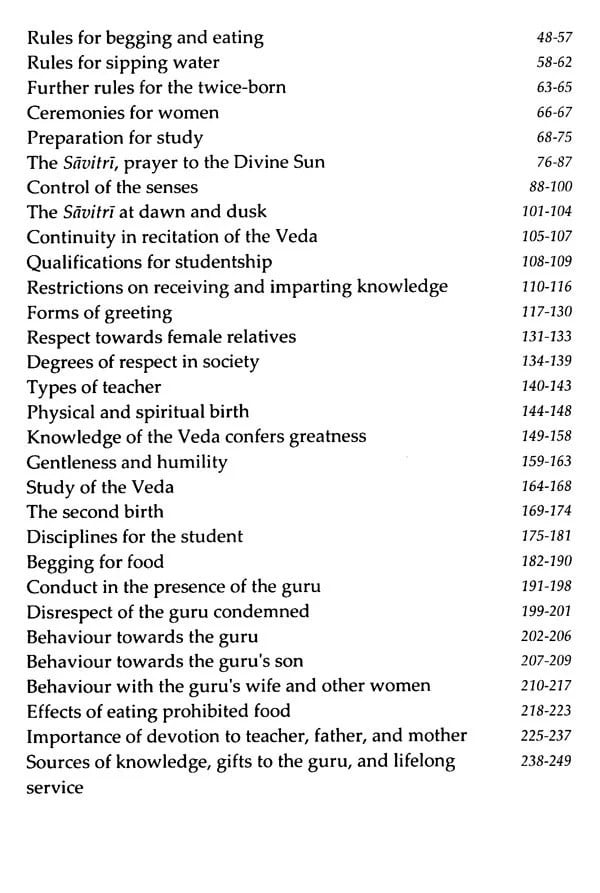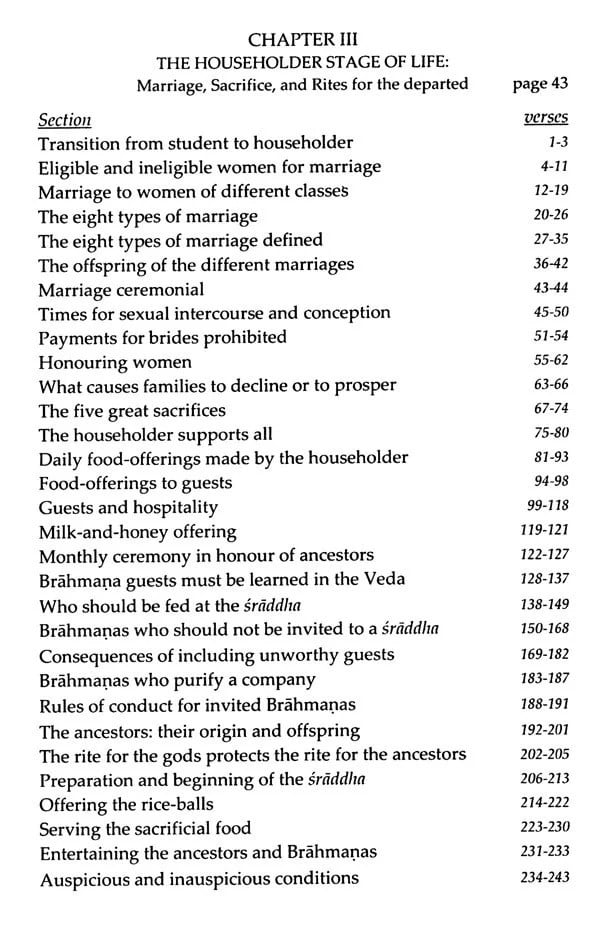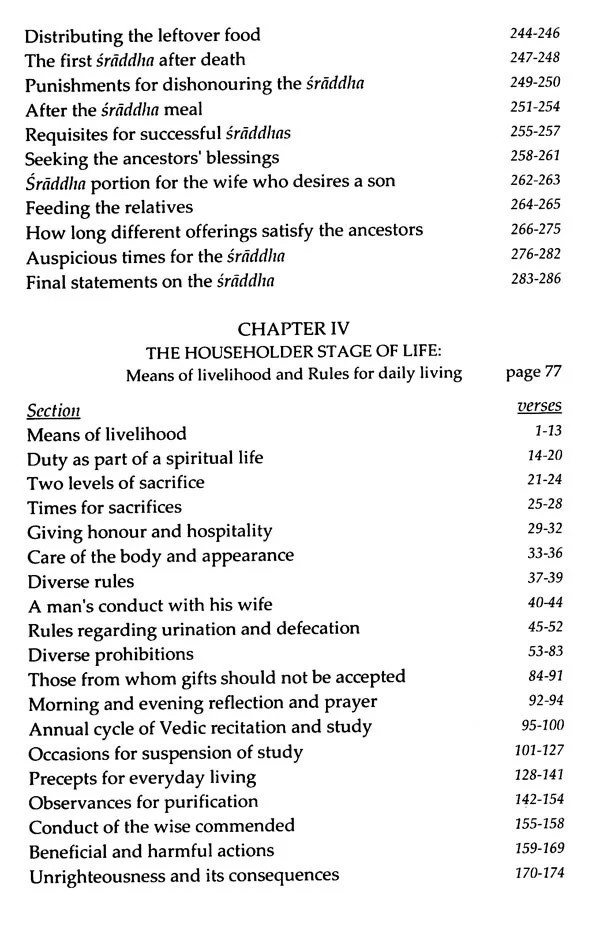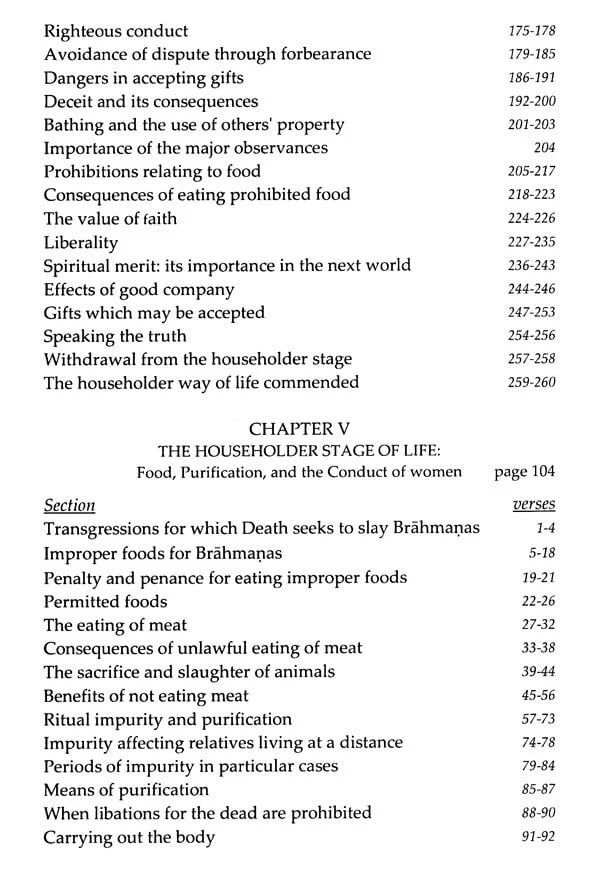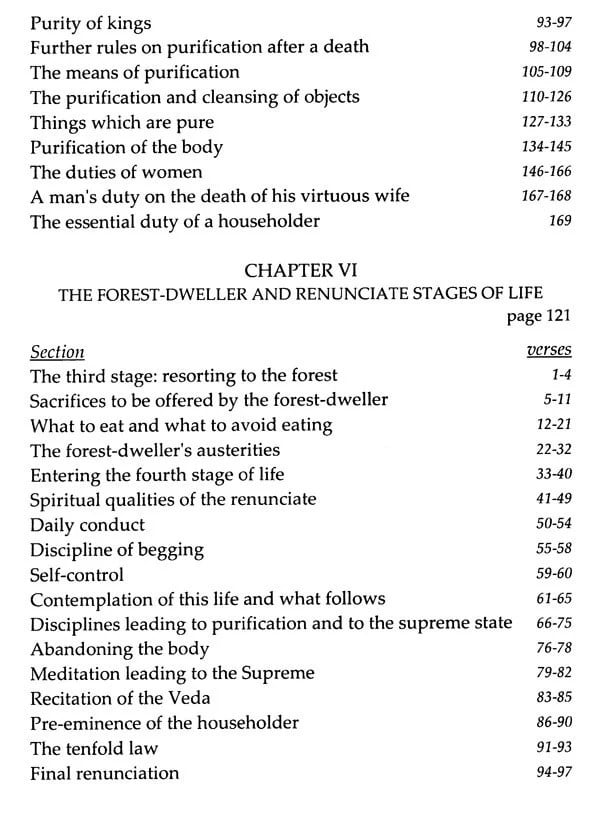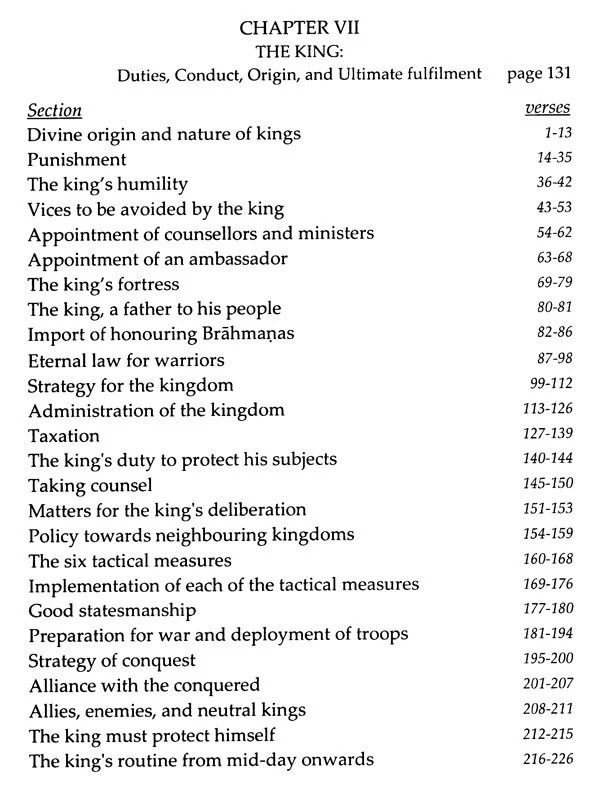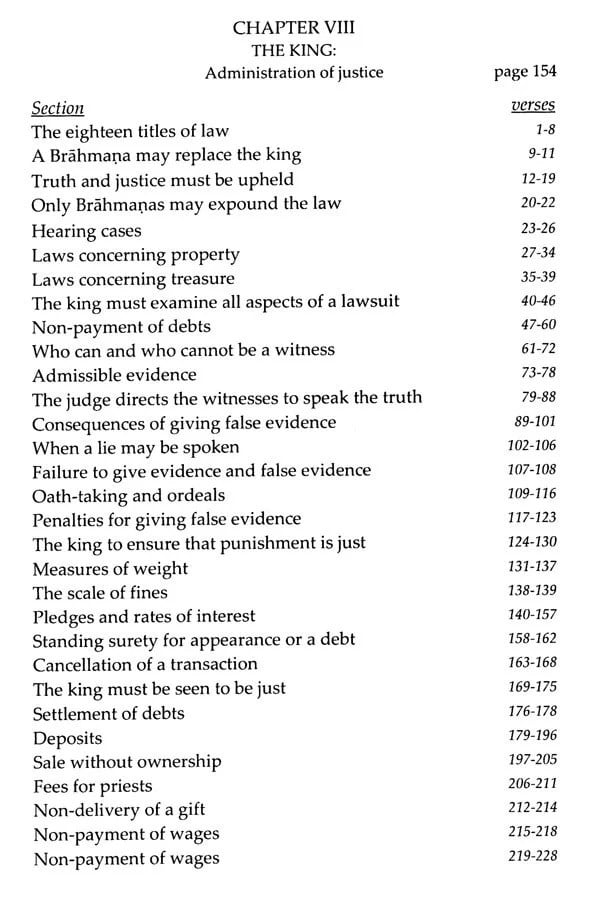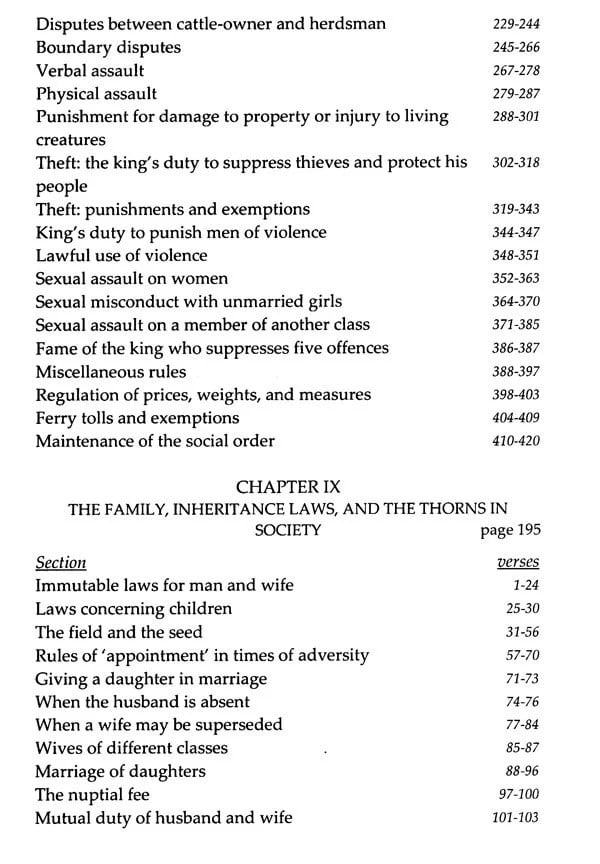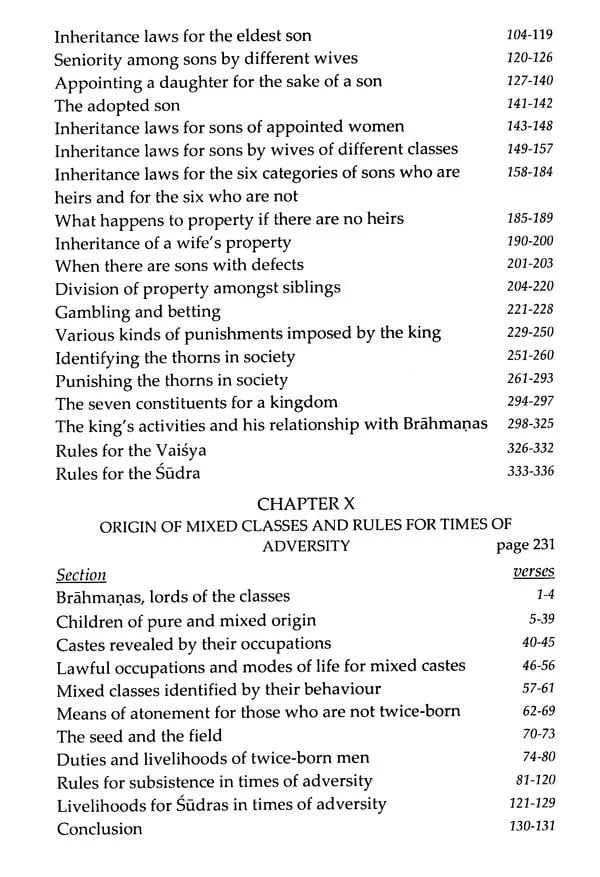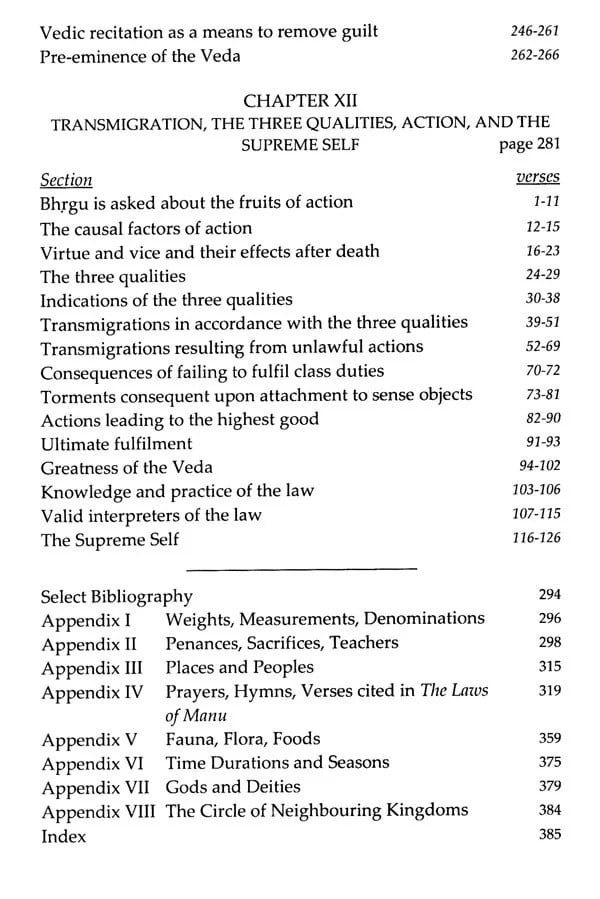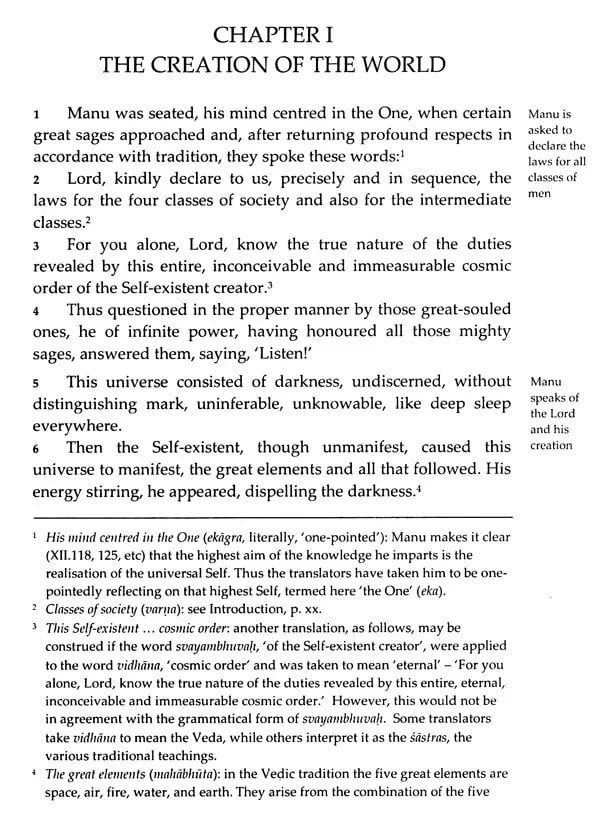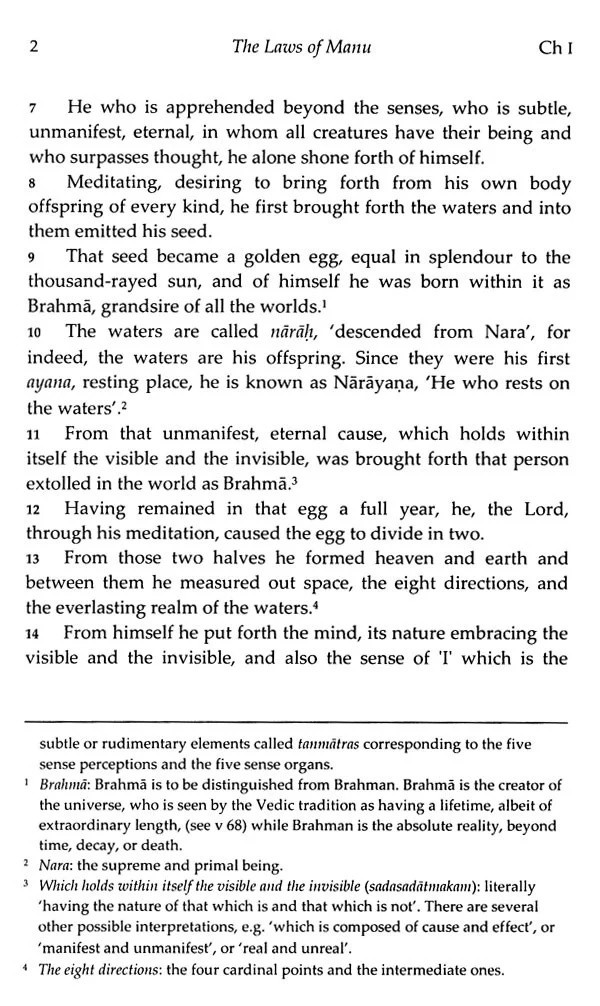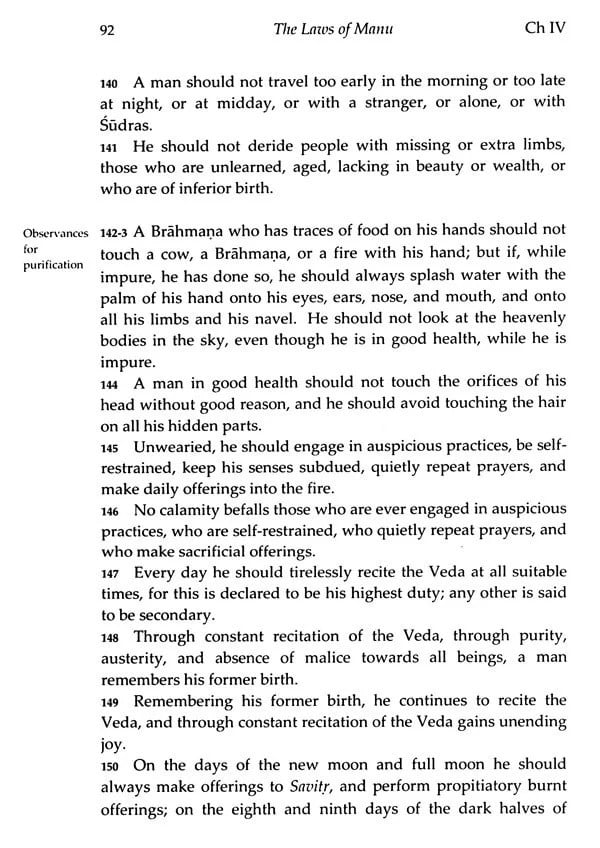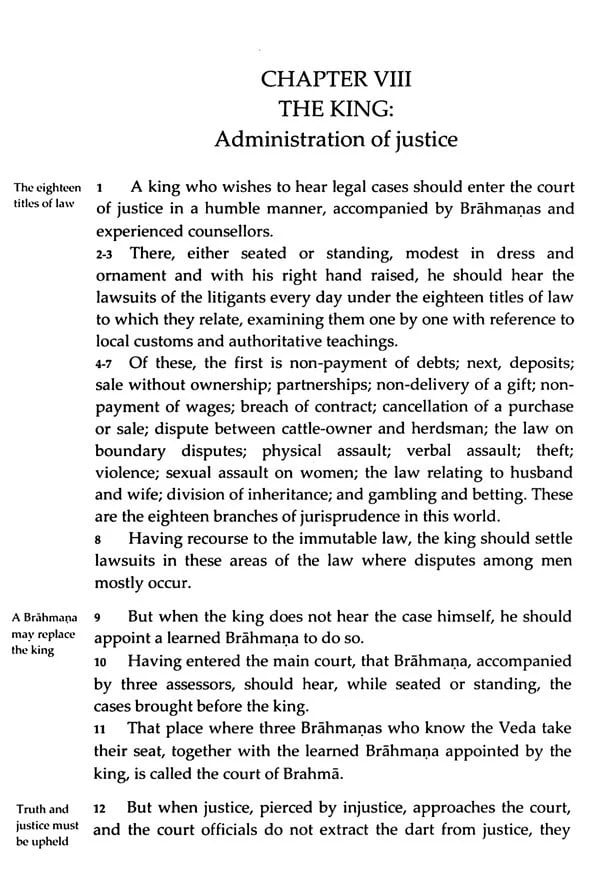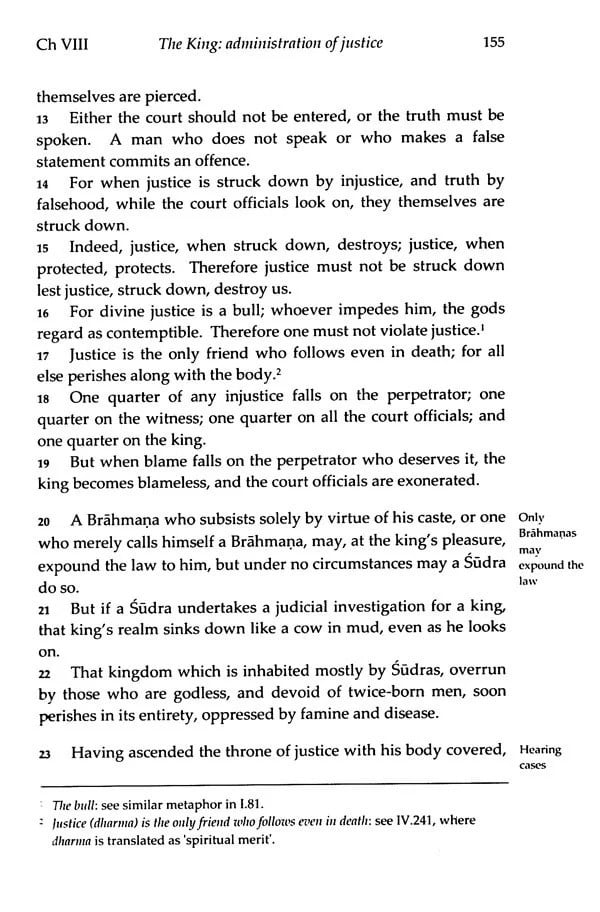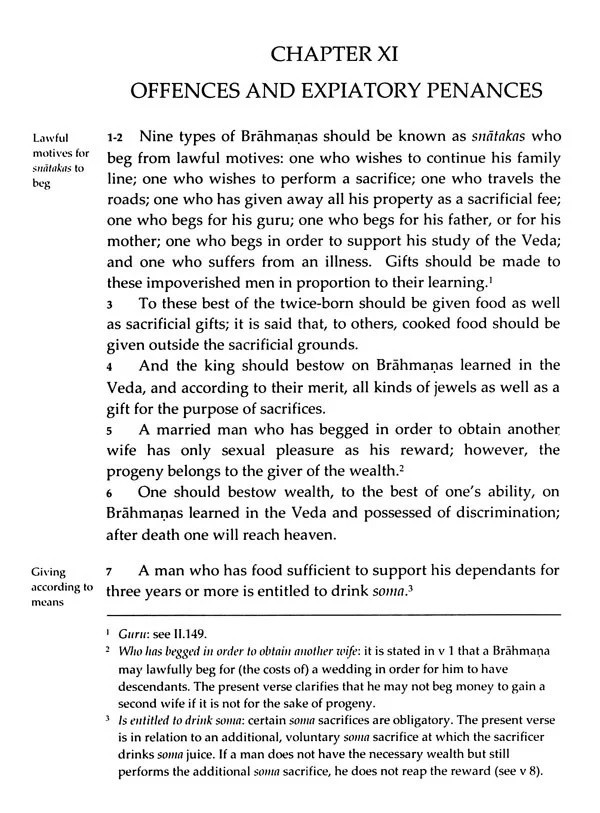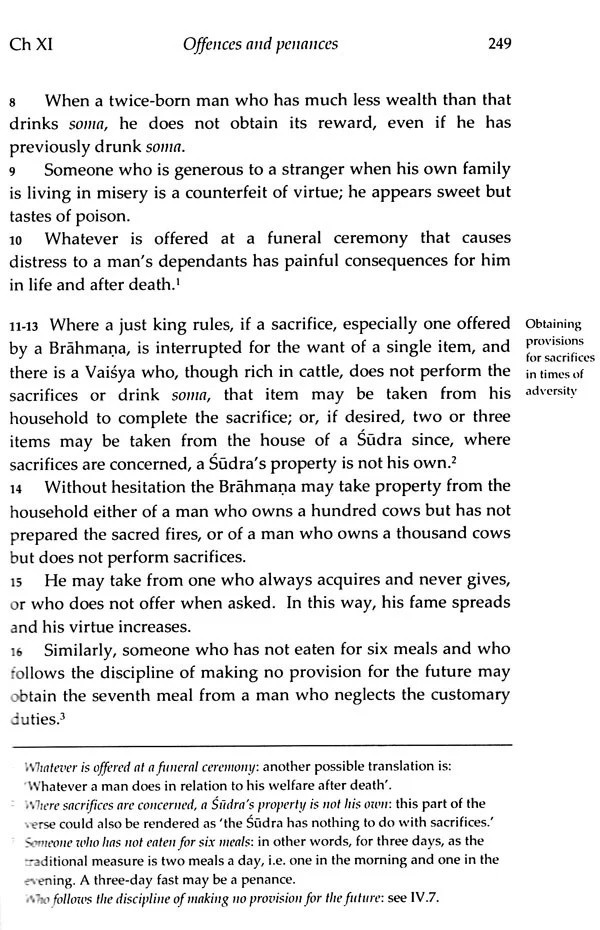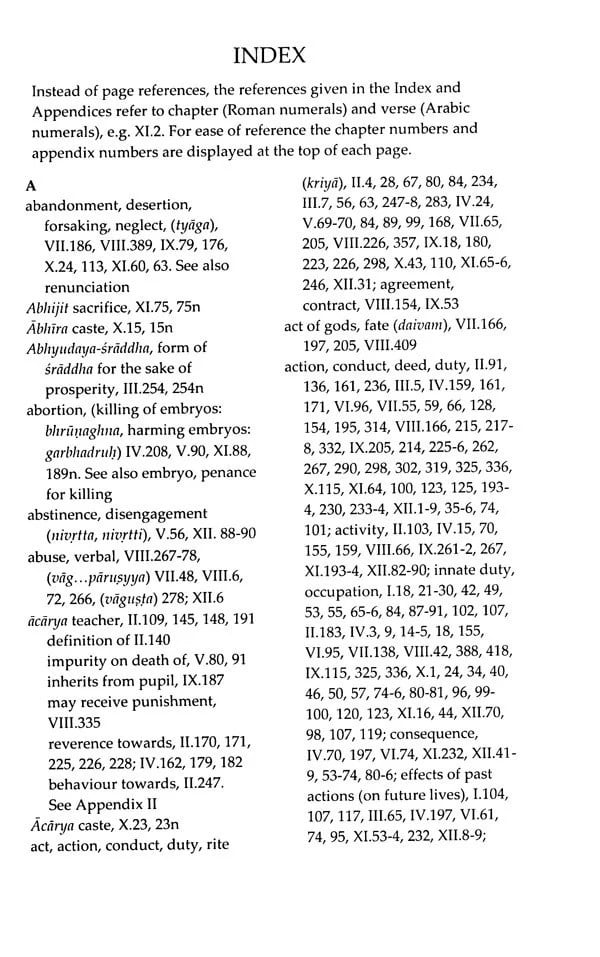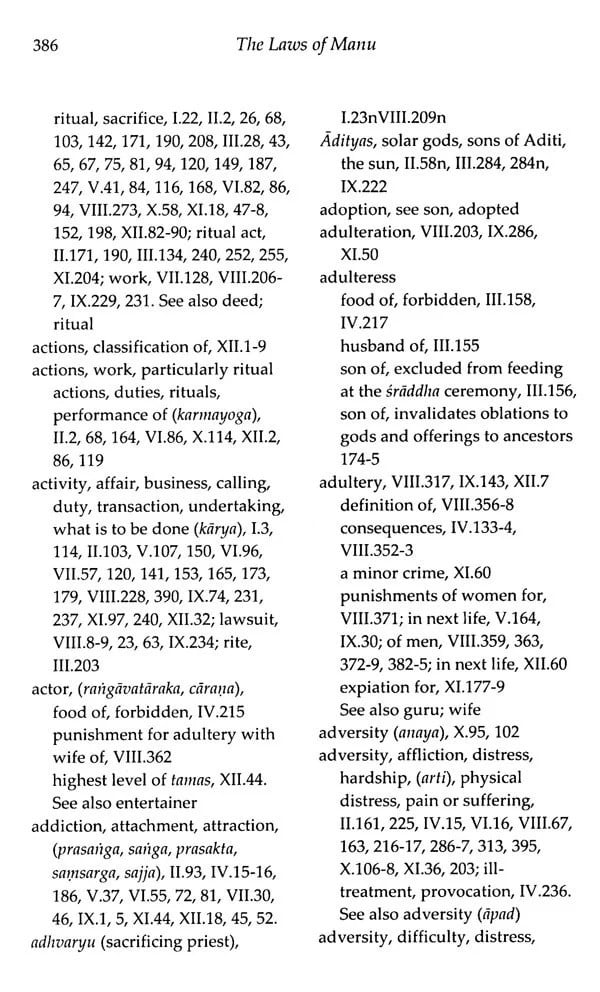
The Laws of Manu (A New Translation)
Book Specification
| Item Code: | UAA932 |
| Author: | Julian Hubersgilt and Annick Hardaker |
| Publisher: | Motilal Banarsidass Publishing House, Delhi |
| Language: | English |
| Edition: | 2020 |
| ISBN: | 9788194454755 |
| Pages: | 512 |
| Cover: | HARDCOVER |
| Other Details | 9.00 X 6.00 inches |
| Weight | 620 gm |
Book Description
This new translation offers a contemporary rendering of this ancient work which addresses fundamental questions of law and duty for all members of society.
One cannot but be impressed by the breadth of scope conjoined with sometimes minute and informative detail. The Laws embody the genius of their originators whose minds could contemplate the full extent of human society and accommodate a code of conduct which would ensure its lawful and harmonious regulation. The modern mind will certainly take issue with many of its directions and prohibitions, yet the same mind may also find within The Laws a source of inspiration and guidance in a world of apparently increasing disorder and conflict.
Societies continuously modify the conventions by which they function and these may be evolutionary or consciously directed. It is for each generation to discover how the laws expressed in this work may find contemporary relevance. The present age thirsts for new frontiers of enquiry to bring advancement to the world. Within The Laws with its wealth of principles there is rich material for such an exploration. The text is of great interest as a cultural document but will equally find validity as an object of serious consideration for those who seek a practical vision for the welfare of mankind.
“This teaching is the supreme path to wellbeing; it develops the understanding; it confers fame and long life; it leads to the highest good. -The Laws of Manu I.106
The Laws of Manu constitutes the most complete of the ancient expositions of dharma available to us. Who, then, was Manu and what is dharma?
Who was Manu?
There are various views concerning the authorship of The Laws of Manu. One view presents Manu as the primordial man, progenitor and overseer of the human race across vast epochs of time. The Sanskrit word for 'human being', manava, identifies each of us as a 'child of Manu'. The all-seeing Manu established a system of laws valid for human society throughout the ages. These laws are designed to ensure maximum happiness to the society which they regulate. They give its members a secure social order while at the same time offering them the possibility of transcending human limitations in the attainment of nihsreyasa, the highest good. Another view sees Manu as a sage appearing at a particular time and place. His wisdom, however, is applicable to all subsequent societies, in principle if not in detail. A third view, which is held by many scholars today, sees The Laws of Manu as a compilation of statements, probably of diverse authorship, relevant only to a particular civilisation and time. This civilisation was centred on the Veda, a collection of hymns forming part of a complex system of ritual and cosmology. Such a view dates the formulation of the text to some time between the third century BC and the second century AD.
A traditional legend speaks of an original version of The Laws of Manu many times longer than the extant text, which is reputed to consist of mere fragments of that original work. There is evidence to support such a hypothesis in that some verses dealing with a common theme do not flow in a logical sequence. Verses are to be found out of their natural context. The presence in the text of alternative or contradictory rules would also seem to indicate varying interpretations of the law over time.
Throughout history, men of insight, such as Vyasa, Moses, and Homer, have enunciated profound truth in a language appropriate to their time. It is possible in all these cases also, to see their words either as the product of one author or as a compilation from various sources, the common factor being the sublimity of their inspiration. It is this inspiration that has ensured the survival of these works over many centuries.
What is dharma?
The subject of The Laws is dharma. Traditional etymology traces the word dharma to the root dhr, with the sense of 'upholding and supporting'. Thus a well-known Sanskrit aphorism states 'dharyate anena iti dharmah 'That by which things are upheld is dharma'.
Another aphorism defines dharma as 'That from which arises prosperity and the highest bliss'.
Dharma is often translated as 'law'. This does not, however, signify merely a system of man-made laws. It is the natural law underlying and regulating all aspects of the universe. It applies to the individual, to human society, and to the whole of creation. Hence dharma can also mean religion, justice, righteousness, merit, virtue, etc, according to context. Dharma governs every aspect of a person's duty and function in life. Obedience to dharma enables each person to live in harmony with society and the whole of creation.
Dharma is defined in II.1 as 'that law which is followed by the wise and to which the good, ever free from aversion and attachment, assent in their heart'. To establish the authority of this law, the text repeatedly refers to the Veda: to practise dharma is to live according to the Veda.
An important aspect of dharma running as a thread through The Laws is that of a virtuous life. Manu declares:
Constancy, forbearance, self-control, not-stealing, purity, regulation of the senses, use of reason, spiritual knowledge, truthfulness, and absence of anger: these are the ten aspects of the law.
The Veda
Study and recitation of the Veda is central to life in the civilisation legislated for by Manu. The Laws describes how recitation of the Veda is to be carried out regularly during all four stages of life. Even during the final stage the wandering renunciate, though free from the need to perform external sacrifice, is to reflect on the Upanisads. These are the profound spiritual discourses also known as Vedanta due to their location at the end, anta, of each of the Vedas. The Upanisads proclaim the innermost Self of the human being as nothing less than Brahman, the Universal Spirit, the source of all, reality itself.
The word veda means 'knowledge'. This is traditionally held to be the knowledge that gives form to the universe, comparable to the Word, the Logos, by which, as St John proclaims at the beginning of his gospel, 'All things were made'. Thus Manu, speaking of the Creator in the act of creating, says:
In the beginning he measured out the distinctive names, functions, and particular natures of all, in accordance with the words of the Veda.
The Veda is known as sruti, meaning 'that which is heard'. This is because it was originally heard deep in their being by pure-souled seers who then taught it to their disciples. They, in turn, handed it down to succeeding generations. In the present translation sruti is rendered as 'the Revealed Word'. Distinct from sruti is smrti, 'that which is remembered'. Smrti consists of the words of known individuals and is rendered in this translation as 'the Sacred Tradition'. The Veda is also said to have six limbs called Vedangas. These deal with the sciences of pronunciation, metre, grammar, etymology, astronomy, and ritual. Their study constitutes one element of an elaborate system designed to preserve the Veda unaltered through the ages.
The essence of the Veda is said to be expressed in the Savitri prayer, also known as the Gayatri, into which a young boy is initiated as part of his entry into the student stage of life.
**Contents and Sample Pages**

